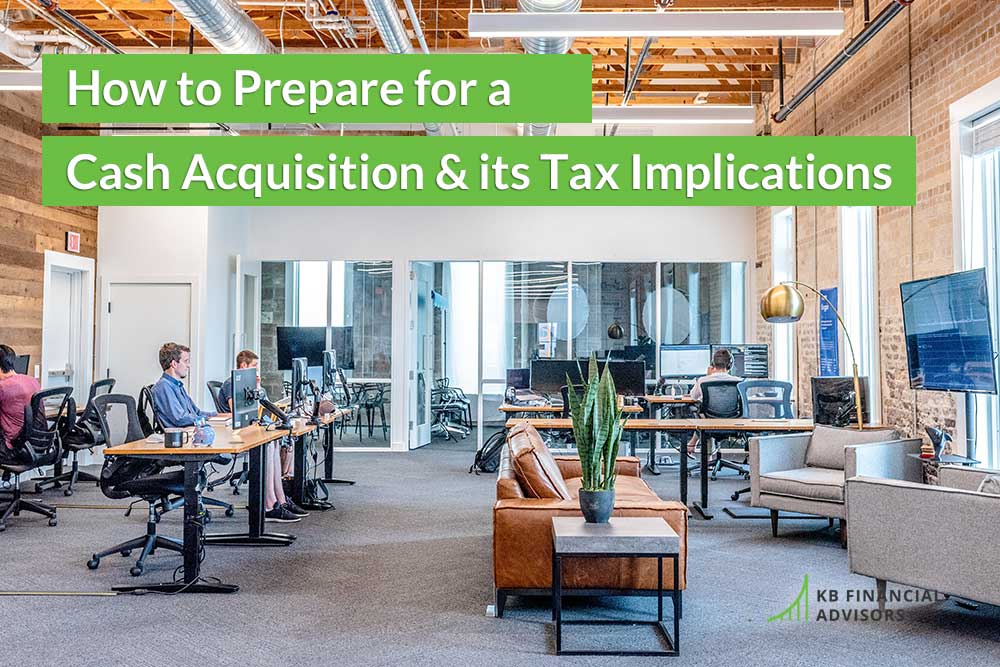You could be overpaying your stock options tax without knowing it — even if you have a tax preparer. Here’s how to dodge this costly tax trap.
Exercising your employee stock options is a good thing.
After all, it usually means you’re becoming wealthier and smarter about your long-term finances.
But, like it or not, exercising stock options does complicate your yearly tax filing. So much so that if you’re not careful, a mishap can lead to the dreaded IRS tax trap: double taxation.
Like the name suggests, double taxation is when your income gets mistakenly taxed twice, costing you double the tax payment.
Fortunately, you can avoid this costly trap if you know which discrepancies to look out for and which IRS forms to pay attention to.
This post delves into the ways you could face double taxation, a real-life cautionary tale, and how you can protect your money by avoiding the IRS tax trap.
If you exercised stock options last year, you’ll receive a Form 1099-B from the brokerage firm that handles your employee stock options. Per IRS requirements, your Form 1099-B must show an “initial” cost basis for stock options exercised and sold last year. The initial basis for incentive stock options (ISOs) and non-qualified stock options (NSOs) is the price you paid for the stock, which is the exercise price — or strike price — under your option grant.
5 ways your income can be double reported
There are multiple ways you can fall into the tax trap of double-reported income, and they all stem from the same core issue: having the same income or stock options reported on two tax forms. The most common instances of double reporting occur when the same income is reported on your Form W-2 and Form 1099-B.
Be wary of these situations, as they tend to cause double taxation:
- Restricted stock unit (RSU) income. Income from the vesting of RSUs and the release of the shares from RSUs is reported on your Form W-2. In some cases, you may get a Form 1099-B that also reports this RSU activity but will not pick up the cost basis. Or, your Form 1099-B may pick up the cost basis but not report it to the IRS. That being said, be hyper aware of your RSU taxes and pay attention to the supplemental 1099-B pages, as they sometimes provide helpful information. Make sure the RSU-related incomes reported on your W-2 and 1099-B match and that you don’t have a case of the same income being reported twice.
- Taxable employee stock purchase plan (ESPP) discount. In some cases, the taxable discount on your employee stock purchase plan is not picked up as a basis adjustment to the 1099-B sales reported. To correct this, reference Form 3922.
- Disqualifying dispositions of employee stock purchase plans. Disqualifying dispositions occur when you haven’t held your shares long enough to qualify them for long-term capital gains tax. When that’s the case, the income portion of the sale — meaning the portion that should be reported on your Form W-2 — isn’t picked up on your Form 1099. This is another case of income that’s reported on both Form 1099-B and box 14 of Form W-2. To tie these double-reported incomes together, refer to Form 3922.
- Incentive stock options sold in a same-day sale or disqualifying disposition. ISOs may only have the strike or exercise price listed as the basis for capital gains on Form 1099-B, but there’s also an income portion on Form W-2. With ISOs sold in a same-day sale or disqualifying disposition, the income portion on Form W-2 isn’t picked up as an adjustment to the cost basis on Form 1099-B. Double-reported ISO income can cost you as much as hundreds of thousands of tax dollars that you don’t actually owe, making it one of the most costly forms of double taxation.
- Incorrectly reporting alternative minimum tax (AMT) basis for long-term ISOs. When dealing with long-term ISOs, you could end up paying alternative minimum tax and ordinary taxes on the same dollars. This double taxation occurs if you pay the AMT one year and sell your shares the following year without making an adjustment to your AMT cost basis. Under these circumstances, you end up paying ordinary taxes on stock options or income that you already paid the AMT on the previous year. We delve more into this complex form of double-reported income in a blog post that outlines four ways to accelerate AMT credit.
A real-life cautionary tax tale
One KB Financial Advisors client had a remarkably close call that would have cost him almost $200,000 in erroneous tax payments.
Dave, we’ll call him, was loyal to a tax preparer long before he started working with us. As such, he wanted to continue having his original preparer file his tax return while receiving some oversight from our team. Not all tax preparers are versed in reporting stock option transactions to avoid errors like double taxation, and that proved to be an enormous issue for Dave’s finances.
Here’s some background on Dave’s situation:
He’d exercised stock options throughout the years, with both short- and long-term holdings. Going into the current year, he had shares from incentive stock options, some of which qualified for long-term capital gains. Dave’s company was acquired by a private equity firm, taking it from being publicly traded to being privately held, forcing him to cash out his existing shares. This acquisition put Dave in a unique position, as he had no choice but to sell, whether his shares qualified for long-term capital gains or not. Dave’s already-complicated tax situation is made even more complex by the fact that he held his shares in two separate accounts. This resulted in his income from the transaction (i.e. selling his shares) being reported on a single Form W-2 and on two separate Forms 1099-B, instead of the typical one Form 1099-B.
Here’s how Dave’s two accounts are set up:
Account #1: Dave’s first account houses the shares he held for long-term capital gains. His Form 1099-B for these shares was correct, as the long-term cost basis was the exercise price and the AMT basis was the fair market value at the time of exercise.
Account #2: Dave’s other account is a bit less straightforward. He’d exercised shares throughout the current tax year, but his company’s acquisition caused those shares to be sold before holding them for at least one year, disqualifying them from long-term capital gains. This transaction resulted in disqualifying disposition income and only the exercise price was picked up on Bruce’s 1099-B. Meanwhile, box one on his Form W-2 reported the ISO disqualifying disposition income, putting him at risk of double taxation.
Dave’s previous tax preparer couldn’t wrap his head around all these different types of equity at play and the adjustments needed to avoid double taxation. The preparer eventually determined they were unable to properly prepare Dave’s taxes and handed over the reins to us.
This particular case dealt with $700,000 in income being double reported on Forms W-2 and 1099-B. Without the right adjustments, the previous preparer’s drafted tax return erroneously stated that Dave owed $270,000 in federal tax. After making the necessary adjustments, our team determined a correct federal tax bill of a much lower $85,000. By working with tax experts who specialize in employee equity, Bruce dodged a double-taxation mistake that would’ve cost him $185,000. These savings alone would help Bruce cover our services for years to come.
Don’t fall into the IRS tax trap
There’s a lot of money at stake for professionals with employee equity. Filing your own taxes on stock options or working with professionals who lack expertise in this niche is risky and can cost you hundreds of thousands of double-taxation dollars.
Turning to professionals who’ve been there and done that is the ultimate foolproof way to set yourself up for minimal tax payments and maximal peace of mind.
Avoiding the tax trap starts with a 15-minute initial call, which beats the hour you’d otherwise spend verifying the basis on your Form 1099-B. We don’t only help with your future taxes; we also retroactively look at your last return to ensure your taxes were filed correctly. This audit alone has saved some of our new clients upward of $35,000.
Book a call today to talk to myself or another expert on our team about avoiding the dreaded IRS tax trap.







